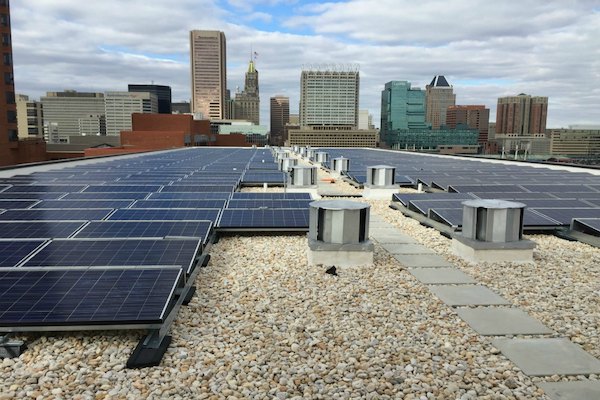News
Behind Microsoft’s bold plan to build social equity into clean energy buying
Published: August 6, 2020
Behind Microsoft’s bold plan to build social equity into clean energy buying Heather Clancy Thu, 08/06/2020 – 00:45
There were plenty of juicy news tidbits in Microsoft’s recent progress report about its goal to become carbon negative over the next decade. But its new goal to link at least 500 megawatts of forthcoming solar energy contracts to environmental justice considerations is bold for many reasons.
For context, the total pledge amounts to about a quarter of the capacity that Microsoft already has signed (1.9 gigawatts) in solar and wind contracts. This is the largest commitment it has made to a single portfolio investment, so it isn’t some side project. Nor is this a reaction to the nationwide protests triggered by the death of George Floyd this spring — the active planning has been under way since December.
“We spend a lot of time talking about the energy transition needed if our society is going to transition to a net-zero economy by 2050,” Microsoft’s environment chief, Lucas Joppa, told me. “Microsoft’s position is that the transition has to be an inclusive and just one.”
The arrangement, with project financer, investor and developer Sol Systems, will prioritize opportunities and investments in communities “disproportionately affected by environmental challenges.”
What does that mean more specifically?
The installations could be in urban neighborhoods that haven’t typically had access to economically priced clean energy resources or that historically have been disproportionately affected by pollution. But they also might be sited in rural communities that have been negatively affected by job losses triggered by the closure of fossil fuels plants or extraction operations, notes Sol Systems co-founder and CEO Yuri Horwitz. “We think it’s equally important that we engage all segments of society,” he said.
As anyone responsible for renewable energy knows, it historically has been very difficult to build metrics around the social impacts of projects.
The arrangement also will prioritize buying from minority and women-owned businesses. And it will provide at least $50 million in the form of grants to support educational programs, career training, habitat restoration and initiatives that provide low-income communities with access to clean energy and energy efficiency programs. “Solar is, and should be, an economic engine for everyone,” Horwitz added.
To make this work, the two companies created a framework power purchase agreement to cover individual projects as they are identified with the intention of getting them validated and approved more quickly. Among the terms: A certain portion of the revenue that’s generated will be reinvested back into the community where a solar farm is located. “You can do this at scale and at a price point that is economically doable,” Joppa said.
Microsoft will use third-party evaluators to help quantify and document both the social and environmental outcomes.
Lily Donge, a former principal in the energy practice at Rocky Mountain Institute and now director of corporate innovation for communities with Groundswell, believes Microsoft’s deal with Sol Systems is a sign of things to come. “We do not know whether the community process will be equitable, transparent or consultative,” she wrote on the community solar organization’s blog. “But this is a signal that a giant tech company is willing to understand the demands of the community, under-served customers and the public at large.”
As anyone responsible for renewable energy knows, it historically has been very difficult to build metrics around the social impacts of projects, but Sol Systems has been focusing on methodologies for doing so for the past 12 years — it already has about 800 MW of similar projects in its portfolio, including deals it has done for Amazon and Under Armour. The latter project was built in Maryland on land that couldn’t be used for residential development; it will contribute about $1.4 million in tax revenue to the local community. Another Sol Systems ally is Nationwide Insurance, its financing partner.
This isn’t the only relationship Microsoft will use to procure energy in the future, so it will be important to watch how that consideration bleeds into other contracts. I’ll definitely be asking. You should do so, too.
This article first appeared in GreenBiz’s weekly newsletter, VERGE Weekly, running Wednesdays. Subscribe here. Follow me on Twitter: @greentechlady.

Sol’s 196-kilowatt solar installation at Christ Church apartments, a low-to-moderate income senior living facility located on the Baltimore Harbor.
